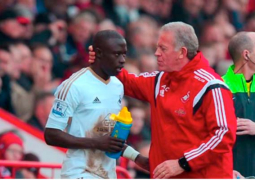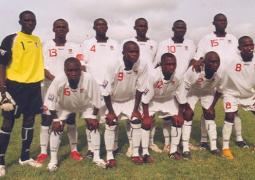Welcome readers to another educating read piece of Bring it on! This time around I thought it wise to bring you the most talked about summit in the history of climate change. This is to help make you better understand what happened in the Cop15, so take a ride with Ibrahim Ceesay the National Coordinator of Children for Children Organization who tells you all there is to know about Copenhagen.
I spent eight weeks traveling Europe with a group of 13 AVAAZ climate activists from five different continents, organizing for a better Copenhagen. For the past one week I've been trying to make sense of what happened in the final moments of that journey.
The story of Copenhagen began in Bali, Indonesia two years ago. After an intensive two weeks of negotiations, 192 countries, including the Bush Administration, signed on to the Bali Roadmap, a plan to complete a binding global climate treaty in Copenhagen.
The Bali Roadmap was a political agreement acknowledging that the evidence for the planet warming is "unequivocal," and that further delays in reducing emissions would further increase the risks of "severe climate change impacts."
Fast forward to 2009 - after two years of high level negotiations and new peer-reviewed scientific findings warning that climate change is accelerating faster than previously anticipated, the stakes had been raised for Copenhagen. In the first week and a half of the negotiations, leaders from small island states like the Maldives and Tuvalu and from African countries already being thrust into water-related conflicts from extreme drought resisted threats and bribes from developed countries as they insisted on an ambitious and fair legal treaty committed to containing warming below 1.5 degrees C. Tensions ran high and the talks were deadlocked as rich nations and emerging economies blamed each other and the most vulnerable.
After nine hours of direct negotiations from world leaders on the final day, a weak agreement was reached by a diverse group of interests. The three-page Copenhagen Accord is by all accounts far short of the ambitious and fair legal treaty promised in Bali. While it does finally tie emerging economies like China and India in with the United States under the same climate agreement, it also punts most of the hard decisions down the road another year.
At most, the Copenhagen Accord can be called another baby step forward, when the world needed a bold leap. The reason for this colossal failure of leadership was a No Ambition Coalition of the United States and China.
The Copenhagen Accord represents a stark failure of leadership resulting from low ambitions and hard lines taken by China and the United States. The price of carbon fell days after the end of negotiations as businesses warned that Copenhagen had failed to signal global limits on carbon emissions. Moving forward, the climate movement must bring the fight for strong carbon limits back to the United States, passing a strong climate law through the Senate, and find a way to convince China to support a legally-binding treaty with strong emission targets in 2010.
In short, the task ahead is to make the elephant move in the right direction, and fast. Our future depends on it.



